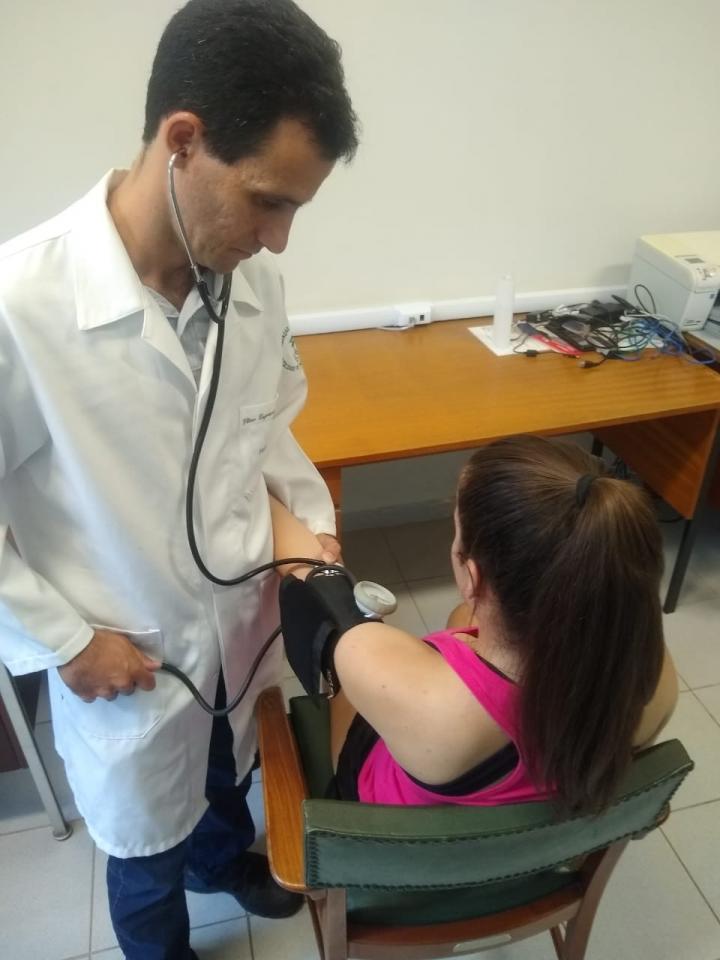
IMAGE: Brazilian researchers arrived at this conclusion after conducting cardiovascular fitness tests with boys and girls aged 10-17. The results were published in Cardiology in the Young. view more
Credit: Valenti et al.
A study performed in Brazil by researchers from São Paulo State University (UNESP) suggests that overweight and obese adolescents have similar increased risks of developing heart disorders. The results of cardiovascular fitness tests with volunteers aged 10-17 were similar in both groups.
Supported by São Paulo Research Foundation – FAPESP, the results of the study were published in the journal Cardiology in the Young. The investigation also featured collaboration with colleagues at Kennesaw State University (USA) and Juazeiro do Norte College in Ceará (Brazil).
“Until recently, overweight in adolescence wasn’t considered as important a risk as obesity for the development of cardiovascular disease. We found the risks to be similar in both cases,” Vitor Engrácia Valenti told. Valenti is a professor at the UNESP campus in Marília and was the principal investigator for the project.
The researchers divided 40 adolescents aged between 10 and 17 into two groups, each with ten boys and ten girls: an overweight group with BMI-for-age Z-scores of +1 or +2 and an obese group with Z-scores above +2.
BMI is body mass index (the ratio of weight to height). Z-scores indicate the number of standard deviations below or above the population mean.
The participants performed a moderate exercise protocol, which involved walking on a treadmill at a slope of 0% and required 70% of the maximum estimated heart rate for this age group.
Heart rate variability was measured before and after the exercise session to assess the speed of autonomic cardiac function recovery. Prolonged autonomic nervous system imbalances after physical exertion have been shown to increase the risk of an acute event and of future cardiovascular disease.
During the first few seconds of an exercise session, the parasympathetic nervous system decelerates cardiac function. One of the two main divisions of the autonomic nervous system, this system conserves energy by slowing the heart rate and relaxing the body in other ways. After 50-60 seconds, the sympathetic nervous system kicks in, stimulating activity such as increased heart rate via adrenalin release, that prepares the body to react to a stressful situation.
According to Valenti, studies published in recent years have shown that the longer after a period of exertion the autonomic nervous system takes to stabilize so that heart rate returns to normal, the greater the risk of cardiovascular or metabolic disease.
The researchers found no significant difference in heart rate variability between overweight and obese adolescents or between girls and boys.
“The mean autonomic nervous system variables were practically identical for both groups regardless of sex,” Valenti said.
“These findings suggest that overweight adolescents have the same predisposition or vulnerability as that of obese adolescents to cardiovascular diseases such as hypertension and heart failure, as well as to metabolic disorders such as diabetes, dyslipidemia, and high levels of triglycerides and LDL cholesterol.”
The number of obese adolescents worldwide has risen sharply in the last 40 years. According to recent studies, the proportion increased between 30% and 50% per decade in developed countries–in Brazil, the prospects are the same.
###
About São Paulo Research Foundation (FAPESP)
The São Paulo Research Foundation (FAPESP) is a public institution with the mission of supporting scientific research in all fields of knowledge by awarding scholarships, fellowships and grants to investigators linked with higher education and research institutions in the State of São Paulo, Brazil. FAPESP is aware that the very best research can only be done by working with the best researchers internationally. Therefore, it has established partnerships with funding agencies, higher education, private companies, and research organizations in other countries known for the quality of their research and has been encouraging scientists funded by its grants to further develop their international collaboration. You can learn more about FAPESP at //www.
Disclaimer: AAAS and EurekAlert! are not responsible for the accuracy of news releases posted to EurekAlert! by contributing institutions or for the use of any information through the EurekAlert system.

